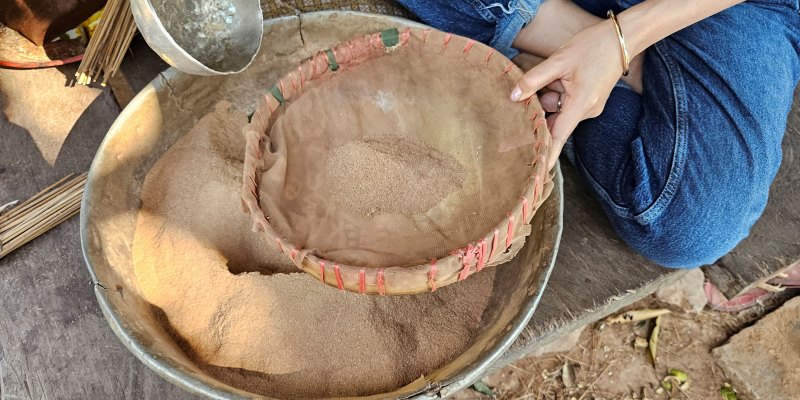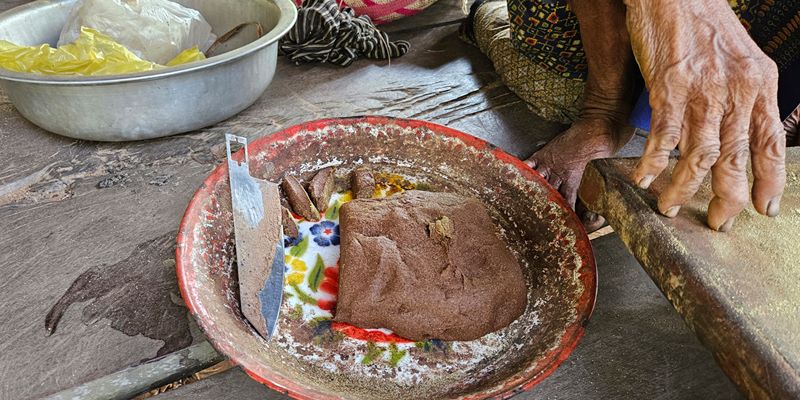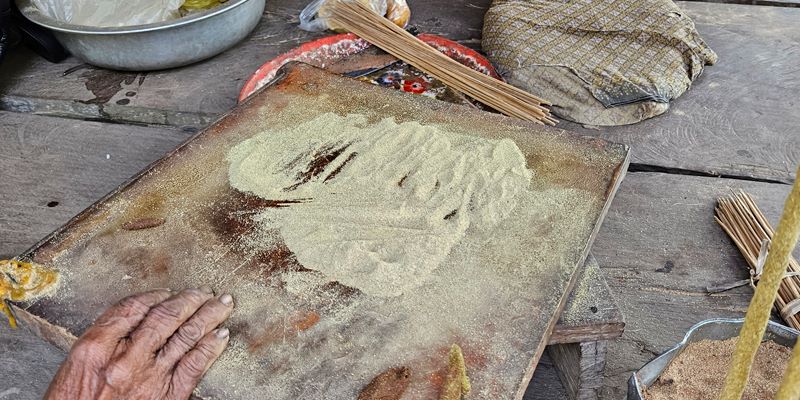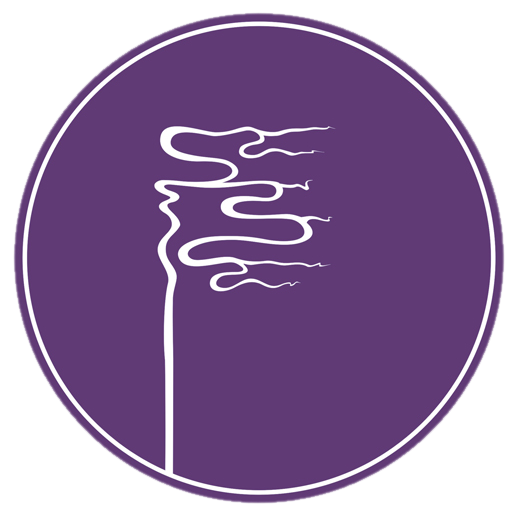The World Makes Scents
If you are a regular reader of my blog, you’ll probably know that I’m also very active on Reddit, and that I find people to exchange incense with primarily on there. It happens that people just offer to send me stuff, and that was the case here as well. I would like to share the story behind this exchange because it’s special…
It all started with someone posting on r/Incense that they were currently on holiday in Cambodia with their wife (who makes incense) and were looking for tips on interesting incense materials they could buy there. Raw ingredients they might not think of or don’t yet know. We started a conversation, and later they offered to send me some photos of their finds on Instagram. On there, we realized that I already follow their account: The World Makes Scents. The Redditor was David Schultz, and his wife is Raksmey, a native Cambodian who learned about incense making through a Buddhist temple near her village. Now, in her new home in the USA, she and her husband make handmade incense cones (and hopefully soon incense sticks).
David sent me many photos while they were still in Cambodia, and we had an engaging conversation about the incense ingredients and how they were trying to find people there who still make authentic incense.
Finally, they found a lovely old lady named Kheoun, who lives in a small village and is the only and last in a line of three generations still making incense sticks from ingredients she collects in the rainforest and processes herself.

Since her children did not follow in her footsteps, the 86-year-old was thrilled to be able to pass on her tradition and family recipe. Raksmey and David bought the recipe and ingredients from her and established a steady trade relationship with her and the village, not least to support the community, which barely has electricity nor proper running water.

Powdered bark being sieved.

The binder made from bark powder, an old blade serving as a spatula.

Kheoun’s workspace, with the powder of aromatic ingredients in which the incense sticks are rolled.
With the help of other villagers, ingredients were gathered, dried, and ground as long as the two were still there, in order to take everything back with them.
In the course of our conversations, David offered to send me samples of their finds once they were back home. Among other things, I received a portion of the laha-like bark powder that Kheoun uses as a binder and a sample of their powdered aromatic ingredients.
The scent is very interesting, it has something of a kitchen herb blend and the raw smell reminds me of licorice root. Burned, it gives off a pleasantly soft and herbal scent that has a distinct sweetness, also reminiscent of licorice but even more so of sweetgrass. It’s a very friendly and warm scent.
Currently, they are still working on identifying the plants, but you can already find the cones in their shop under the name Kheoun’s Blend.
Additionally, they included some samples of their other cones, which I will, of course, review here.
I mainly had contact with David and found him to be a warm, open, and generous person. We continue to exchange tips, recipes, and ideas, and he gives me insight into their work. They grind most of their ingredients themselves to ensure fresh quality, and grinding and sieving are the only production steps that involve electricity. Everything else is done by hand with simple tools and aids.
Raksmey and David put a lot of love and care into developing their recipes, and it shows. They produce honest, down-to-earth incense, as authentic as it gets.
Many thanks to David Schultz for providing the pictures and the logo.



I took a back seat on this experience as my wife is from Cambodia. I am so happy that I did! Without knowing the words I could see my wife was engaging with Kheoun with great respect and understanding. Kheoun was so happy to share her local incense with us and we made sure to take care of her really well along with those in her village who were grinding the powder with big heavy long wooden logs with the plants in the bottom of a concrete sort of vase. Kheoun was perfectly happy and it taught me how living a focused and simplified life can be so rewarding. She had no electricity but she had a car battery with a radio connected. She would go once every couple of weeks to get the battery reachared for $1.00. On the radio were the words of a monk speaking along with beautiful chanting. After our 2nd day with her, I felt I wanted to move right into the village, smash my smart phone, and just hang out with Kheoun. We really hope to visit her again next year but have been having someone travel to her village every few months to buy more ingredients and ship to the USA. I hope the road of life brings us back to her soon.
💜